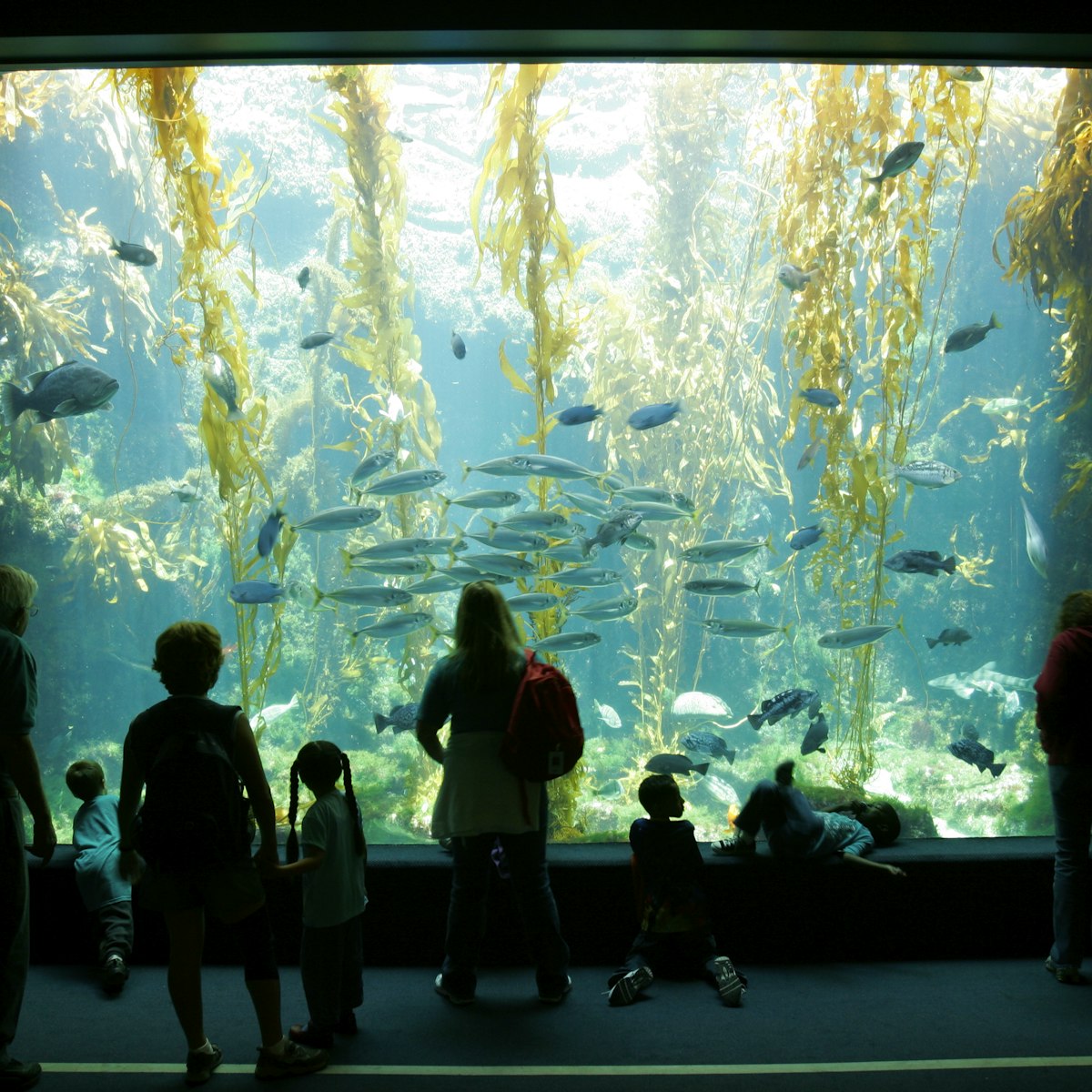This justifiably famous zoo is one of SoCal’s biggest attractions, showing more than 3000 animals representing more than 650 species in a beautifully landscaped setting, typically in enclosures that replicate their natural habitats. Its sister park is San Diego Zoo Safari Park in northern San Diego County.
Arrive early, as many of the animals are most active in the morning – though many perk up again in the afternoon. Pick up a map at the zoo entrance to find your favorite exhibits.
The park is divided into geographical zones and bioclimatic environments including the 7.5-acre Elephant Odyssey, home to Devi and her pachyderm friends; the new Africa Rocks area where a large community of hamadryas baboons, tiny penguins and gracefully fierce leopards steel the show, and the Outback where the largest colony of koalas outside Australia will have you koalafornia dreamin'. Get close up views of polar bears swimming at the Northern Frontier, and hippos grazing in the water on the Hippo Trail. Lines tend to be longest in Panda Canyon, which has its own research station.
The Monkey Trail takes you through an elevated path into the tree canopy where you can see capuchin, colobus and spot-nosed monkeys swinging around. On the Aviary Trail you encounter endangered condors and walk beneath exotic species of winged creatures. There are more than 3000 lizard species but the Komodo dragon is king: this Indonesian reptile can grow up to 10ft long and looks fearsome when strutting around the Reptile House.
The zoo gardens are renowned and some of the plants are used for the specialized food requirements of particular animals. Pick up a brochure for the self-guided botanical gardens tour.
And, of course, the zoo is made for kids, from animal shows to a children’s zoo exhibit (where youngsters can pet small critters). Both children and adults will enjoy the animal nursery, where you can see the zoo’s newest arrivals. Babies of various species are born every spring and summer.
Wear comfortable shoes: walking is the best way to get close to the animals. Alternatively, you can hop on a double-decker bus for a 35-minute narrative overview tour: sitting downstairs puts you closer to the animals. Another option for those unable to walk far is the Kangaroo Bus, which lets you hop on and off at four stops. The Skyfari cable car goes right across the park and can save you some walking time, though there may be a line to get on it.
There are plenty of eateries in the park but lines are long, the quality mediocre at best and prices high. Bringing food and drink with you is permitted (no coolers, glass or alcohol).
To leave the zoo and return the same day, get a hand stamp from the information booth near the entrance. The zoo is located in the northern part of Balboa Park. The (free) parking lot and the zoo fill up on weekends. Bus 7 will get you there from downtown.








